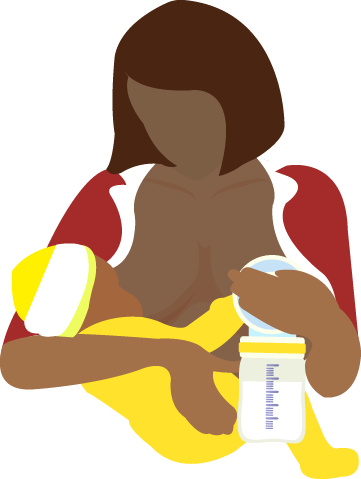There are three phases of breast milk. Each one is vital to nourishing your baby.
- Colostrum. This is the first milk produced by the breast right after birth. It is thick, yellow-ish, and rich in nutrients your baby needs in the first few hours and days.
- Transitional milk. When mature breast milk starts to replace colostrum, it is called transitional milk. This is often what’s called “your milk coming in,” and it usually happens in your first week at home with the baby.
- Mature milk. Mature milk looks thinner than colostrum but is still full of nutrients for baby. It starts about 10-15 days after birth. Mature milk will continue to change with your baby’s needs and tummy.
WHAT HAPPENS DURING THE FIRST FEW FEEDINGS?
You should feed your baby between 8-12 times within 24 hours. There is no set time for feedings. They may be 15-20 minutes per breast. They may be shorter or longer. Your baby will let you know when he or she is finished feeding. Your baby’s eating patterns may change from day to day. Just follow your baby’s lead, and that will help you build your milk supply.
Try feeding your baby on the fuller breast first until your baby releases the nipple or falls asleep. Then burp your baby and offer the other breast. Some babies feed from both breasts at each feeding, while other babies are satisfied after one breast. When your breasts feel full, it is important to nurse your baby. That will keep your breasts from becoming overfull or engorged.
Source: WIC BREASTFEEDING SUPPORT
Link: https://wicbreastfeeding.fns.usda.gov/breastfeeding-basics




